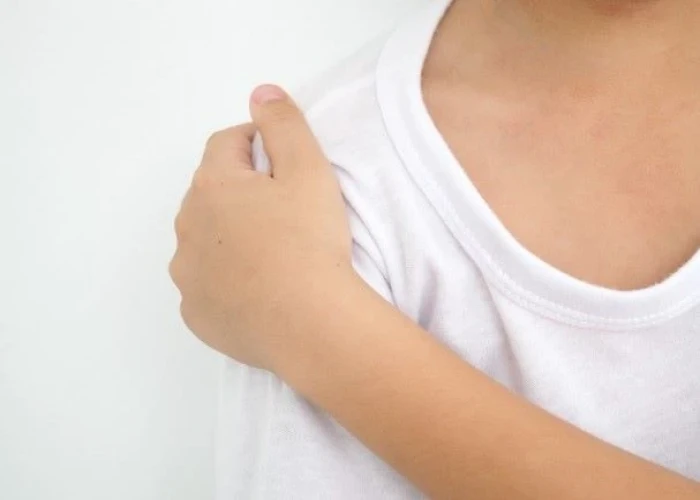 Welcome
Welcome
“May all be happy, may all be healed, may all be at peace and may no one ever suffer."
Polymyalgia rheumatica

Polymyalgia rheumatica (PMR) is a common inflammatory disorder that causes pain and stiffness in the muscles of the neck, shoulders, arms, and hips. It usually occurs in people over the age of 50 and is more common in women than men.
The exact cause of PMR is not known, but it is believed to be related to an abnormal immune response. It often occurs alongside another inflammatory condition called giant cell arteritis (GCA), which affects the arteries in the head and neck.
Symptoms of PMR may include pain and stiffness in the muscles, particularly in the morning or after periods of inactivity, fatigue, fever, and weight loss. These symptoms can be severe and may limit a person's ability to perform daily activities.
Diagnosis of PMR typically involves a physical exam, blood tests to check for markers of inflammation, and sometimes imaging tests to rule out other conditions. Treatment for PMR usually involves a course of corticosteroid medications, such as prednisone, to reduce inflammation and relieve symptoms.
While PMR can be a chronic condition, most people experience significant improvement with treatment. Regular follow-up appointments with a healthcare provider are important to monitor symptoms and adjust treatment as necessary.
If PMR is suspected, it is important to seek medical attention promptly to ensure proper diagnosis and treatment.
Research Papers
Disease Signs and Symptoms
- Shoulder pain
- Stiffness in affected areas, particularly in the morning or after being inactive for a time
- Trouble sleep (insomnia)
- Strong depression
- Weight loss
- Loss of appetite
- Fatigue (Tiredness)
- Fever
- Pain or stiffness in the hip, groin, thigh or knee
- Knee pain
- Pain in neck, arms and back
- Neck pain
- Limited range of motion in affected areas
Disease Causes
Polymyalgia rheumatica
The exact cause of polymyalgia rheumatica is unknown. Two factors appear to be involved in the development of this condition:
- Genetics. Certain genes and gene variations might increase your susceptibility.
- An environmental exposure. New cases of polymyalgia rheumatica tend to come in cycles, possibly developing seasonally. This suggests that an environmental trigger, such as a virus, might play a role. But no specific virus has been shown to cause polymyalgia rheumatica.
Giant cell arteritis
Polymyalgia rheumatica and another disease known as giant cell arteritis share many similarities. Many people who have one of these diseases also have symptoms of the other.
Giant cell arteritis results in inflammation in the lining of the arteries, most often the arteries in the temples. Signs and symptoms include headaches, jaw pain, vision problems and scalp tenderness. If left untreated, this condition can lead to stroke or blindness.
Disease Prevents
Disease Treatments
Treatment usually involves medications to help ease your signs and symptoms. Relapses are common.
Medications
- Corticosteroids. Polymyalgia rheumatica is usually treated with a low dose of an oral corticosteroid, such as prednisone (Rayos). You'll likely start to feel relief from pain and stiffness within the first two or three days.
- After the first two to four weeks of treatment, your doctor might begin to gradually decrease your dosage depending on your symptoms and the results of blood tests. Because of potential side effects, the goal is to keep you on as low a dose as possible without triggering a relapse in your symptoms.
- Most people with polymyalgia rheumatica need to continue the corticosteroid treatment for a year or more. You'll need frequent follow-up visits with your doctor to monitor how the treatment is working and whether you have side effects.
- Long-term use of corticosteroids can result in serious side effects, including weight gain, loss of bone density, high blood pressure, diabetes and cataracts. Your doctor will monitor you closely for problems. He or she might adjust your dose and prescribe treatments to manage reactions to corticosteroid treatment.
- Calcium and vitamin D. Your doctor will likely prescribe daily doses of calcium and vitamin D supplements to help prevent bone loss as a result of corticosteroid treatment. The American College of Rheumatology recommends 1,000 to 1,200 milligrams of calcium supplements and 600 to 800 international units of vitamin D supplements for anyone taking corticosteroids for three months or more.
- Methotrexate. Joint guidelines from the American College of Rheumatology and the European League Against Rheumatism suggest using methotrexate (Trexall) with corticosteroids in some patients. This is an immune-suppressing medication that's taken by mouth. It might be useful early in the course of treatment or later, if you relapse or don't respond to corticosteroids.
Physical therapy
Most people who take corticosteroids for polymyalgia rheumatic return to their previous levels of activity. However, if you've had a long stretch of limited activity, you might benefit from physical therapy. Talk with your doctor about whether physical therapy is a good option for you.
Disease Diagnoses
Disease Allopathic Generics
Disease Ayurvedic Generics
Disease Homeopathic Generics
Disease yoga
Polymyalgia rheumatica and Learn More about Diseases

Broken arm

Lyme disease

Paget's disease of bone

Sleep apnea

Night Discharge

Tooth abscess

Mitral valve stenosis

Ruptured spleen
polymyalgia rheumatica, পলিমায়ালজিয়ার রেইউমাটাকা
To be happy, beautiful, healthy, wealthy, hale and long-lived stay with DM3S.
